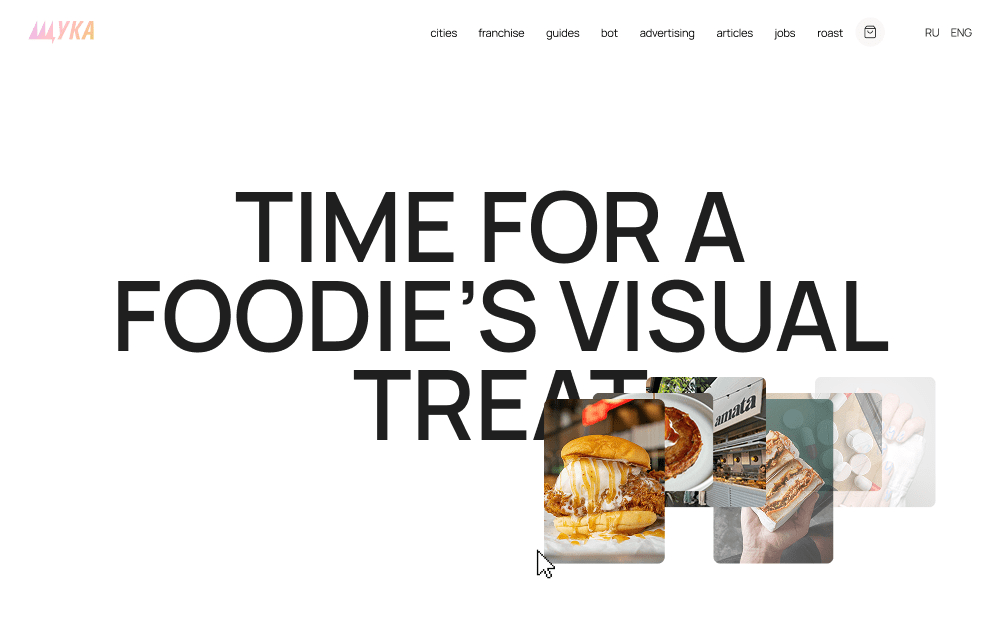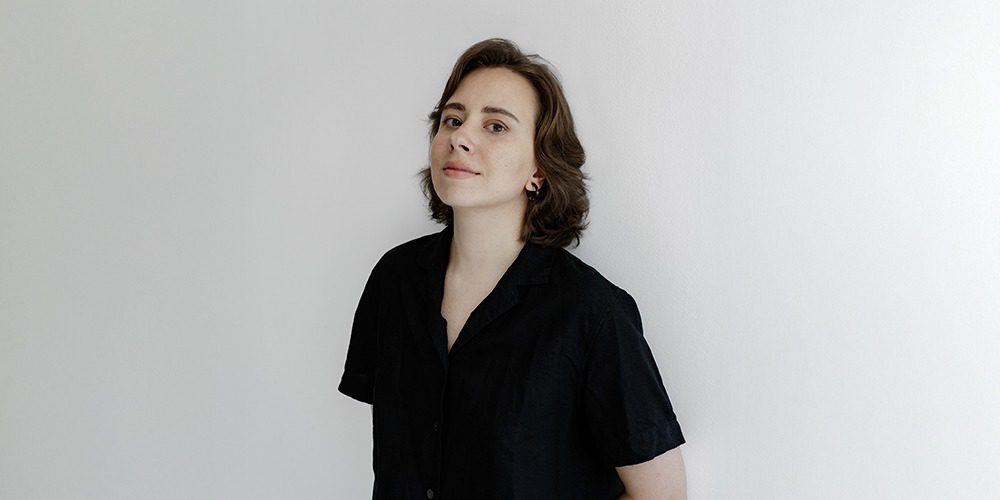A digital product designer, who has driven design transformations across fintech, retail, travel, and education, explains why design has become the meeting point of business logic and human behavior, and how product thinking helps turn creativity into measurable growth.
In 2025, design has firmly moved beyond aesthetics — it’s a measurable driver of business growth. Recent industry reports show that companies embracing design-centric thinking grow 32 % faster and generate 56 % higher returns than their competitors, while every dollar invested in UX brings a return of 100. The line between creativity and strategy is fading, and designers who can navigate both worlds — visual expression and business logic — are becoming as essential as marketers or analysts.
Tatiana Bogomolova represents a new generation of designers who merge creativity with product strategy. As a digital product designer at Alfa Bank, Russia’s largest private bank and a consistent leader in digital innovation, she brings product logic and visual expression into the heart of design processes. Her work on B2B platforms used by thousands of entrepreneurs nationwide, contributes to the bank’s broader success in digital sphere. In these projects, Tatiana develops not only functional flows but also visual concepts and design systems that bring aesthetics into corporate products, making them feel more human and intuitive. In 2024, Alfa-Business was recognized by independent experts at Markswebb as ‘Best Online Bank for Entrepreneurs’ in the Business Internet Bank ranking. Before joining Alfa Bank, Tatiana worked with a range of startups and consumer brands, bringing measurable product results through original design solutions. Today, she also plays an active role in shaping the professional design community as a mentor and educator, collaborating with leading platforms and schools to help designers evolve from visual creators into strategic thinkers.
— Tatiana, recent studies show that companies investing in design grow faster and earn higher returns. From your perspective, how did this shift toward design as a business driver influence your own approach to work?
— Because design is the most visible layer of strategy. It’s where business logic meets human behavior and creativity. When a company begins to treat design not as decoration but as a tool to test hypotheses, understand users, and communicate values, it starts seeing tangible results.
I realized this when I moved from visual design to product work. The more I worked with data, the clearer it became that design and analytics constantly shape each other: data reveals patterns in user behavior, and design decisions, in turn, shift those patterns. Seeing that connection changes how you think about your role — from creating screens to building systems that grow through feedback.
— You worked with Synergetic, a major manufacturer of eco-friendly household products, where your redesign improved how users navigate the brand’s online catalog. How did that experience shape your understanding of product thinking and its role in design?
— For me, product thinking means seeing the whole system — not just the screen in front of you. It’s understanding how a feature connects to business goals, user behavior, and long-term experience. When you think this way, you stop asking, “Does this look good?” and start asking, “Does this work for the person and the product?”
We began with research — heatmaps, user paths, and real feedback from clients. It turned out that people couldn’t find what they needed and simply left. By rethinking the filtering logic, reorganizing the flow, and clarifying the steps, we made navigation intuitive and fast. The improvement was immediate — people started finding products more easily, and conversion rates grew. That project showed me how design can change business outcomes not through trends, but through logic and empathy.
— At Russia’s largest private bank, you work as a Product UI/UX Designer on B2B products like Alfa ID — a system for authorization and access management across bank services, simplifying login for thousands of entrepreneurs nationwide. The product became part of the bank’s broader digital success. Could you tell us about your role in this ecosystem?
— My work is focused on the B2B direction — services for corporate clients and entrepreneurs. Within the Alfa ID project, I’m responsible for the user experience of onboarding and authorization in the banking account. These are the first touchpoints that shape how people perceive the product, so it’s crucial that the process feels clear, fast, and even enjoyable.
I build interactions around clarity, trust, and tone — how the interface guides a client, how visual rhythm supports confidence, how small details make complex actions feel simple. In finance, emotions matter as much as logic: when the design looks calm and coherent, users act with confidence. That’s what turns design into a real business advantage.
— Earlier, you worked in design studios across fintech, e-commerce, travel, and lifestyle. Many of those projects went on to receive industry recognition — from Tagline Awards to international distinctions like Design King, Best CSS, CSS Light, and Web Guru Awards. How did this diverse background shape your view of product design?
— Studio work became my foundation because it taught me to think visually first: to create concepts from scratch, work confidently across different styles, and develop a nuanced understanding of color, typography, grids, rhythm, and composition. That visual discipline became the lens through which I learned to solve broader product problems. In fintech projects, I applied it to simplifying complex financial flows so they felt clear rather than intimidating, while in retail and lifestyle products, it helped build seamless, emotionally coherent journeys that users could trust. This combination of deep visual training and diverse industry challenges shaped how I work today, connecting aesthetics with logic, and treating design as both a strategic system and an expressive language.
— In travel and lifestyle, you worked on products like The Pike, whose redesign drew over 218,000 visits and 70,000 new users, and Tripster, a leading excursion platform. Though far from fintech, both depend on user trust and curiosity. How did you approach design in such an emotional, storytelling-driven context?
— Travel products are all about anticipation: people come not just for information, but for a feeling. With The Pike, the core task was to redesign the website so the interface itself felt like a journey — reshaping the structure, navigation, and visual rhythm to evoke discovery and make exploration intuitive. The goal was to create an experience where clarity and emotion work together: a site that guides users effortlessly, keeps them curious, and makes the process of planning a trip enjoyable in its own right. That emotional layer translated directly into higher engagement and showed how design can turn even practical tasks into memorable moments.

Home page of the site The Pike
— Your portfolio also includes health and well-being projects, like Atmosfera Private Fitness, a boutique sports club. How did you translate the balance of aesthetics, motivation, and trust required by this and other similar projects into interface design?
— Such a design is built on trust. People come to these services in a vulnerable state — they want to improve their body, vision, or overall quality of life — and the interface should support that emotional context rather than add pressure. In such products, the visual language needs to create a sense of calm, safety, and guidance. It’s less about bright motivation and more about reducing anxiety: clear hierarchy, predictable interactions, and gentle visual accents help users feel in control of the process. At the same time, the tone must balance empathy with professionalism so that the product feels both human and reliable.
— Your projects focus on education and growth: English in Stories, a storytelling-based language platform, All Cups, an international platform that has held 50+ championships with 300,000+ participants from 130 countries, and Midas Investment, which simplifies investment tools. How do you approach design for learning and self-development?
— I think of educational design as a conversation — it has to keep a person curious, confident, and emotionally engaged. In many of these projects, my task was not to build complex mechanics but to create image-driven projects that could visually express the founder’s vision, style, and mindset. That meant translating the personality of the brand into tone, rhythm, and atmosphere: the way the interface “speaks,” how it guides a user, and how the visual narrative reflects the values behind the business. When design captures that essence clearly, users feel supported and connected, and the learning experience becomes more intuitive and meaningful.
— Beyond teaching, you contribute to professional communities like Ladies, Wine & Design, a global initiative founded by Jessica Walsh. How do such communities shape the design culture today, and what values are most important for you in them?
Communities are what keep the profession alive. Design evolves too quickly for any one person to know everything — we grow by sharing. In Ladies, Wine & Design, I appreciate the openness and mutual respect: it’s a space where women and non-binary creatives can talk honestly about career growth, leadership, and balance without fear of judgment.
In my own community, I try to keep that same tone — friendly, curious, and practical. We discuss everything from portfolio strategy to burnout prevention. I see mentorship not as hierarchy but as exchange: each person brings their experience, and together we see the field more clearly. That’s what makes design culture stronger — the willingness to learn from one another.
— As a mentor and lecturer at Bang Bang Education, one of Russia’s leading online design schools, and through collaboration and private consultations at Solvery, Get Mentor, and Duo Sapiens, which connect professionals with mentors from major tech companies, what skills matter most for young designers?
Teaching gives me a chance to reflect on practice — to look at design not just as a profession but as a way of thinking. When I explain how decisions are made, I revisit my own logic and make it clearer.
The main skill I emphasize is critical thinking. The best designers aren’t those who know every tool, but those who can ask the right question: “What problem am I solving?” Once they learn that, they can work in any field — finance, travel, education — and make real impact.
— At Singularity Academy, an in-person IT and design education center, innovation, and design training, you also examine students and assess their professional readiness. What typical mistakes do you notice during these evaluations?
— When I review students’ work, I often see the same imbalance, just expressed in opposite ways: some think only about visuals, focusing on aesthetics without understanding the reasoning behind their decisions, while others concentrate solely on usability and logic, overlooking the emotional and visual aspects that make an experience engaging. In reality, strong design lives at the intersection of both. The students who stand out are the ones who can articulate not just what they created, but why — how they researched, tested, refined their choices, and balanced clarity with expression. Understanding the thinking behind a decision always outweighs choosing beauty or convenience in isolation.
— With AI now generating layouts, testing hypotheses, and predicting user behavior, what stays human in design, and how can product thinking help designers stay relevant?
AI can generate results, but it still can’t create meaning. It can process data, but it doesn’t understand context — the “why” behind a decision or the emotion a product should evoke. That’s where human designers remain irreplaceable.
Product thinking helps us stay relevant because it teaches us to connect technology with empathy. It’s not about resisting automation — it’s about guiding it. Designers of the future will be less about drawing interfaces and more about defining intent: understanding people, formulating hypotheses, and shaping systems that actually make life easier.
I think the next stage of design will belong to those who can bridge logic and humanity — the ones who can use AI not as a replacement, but as a partner in thinking.





























